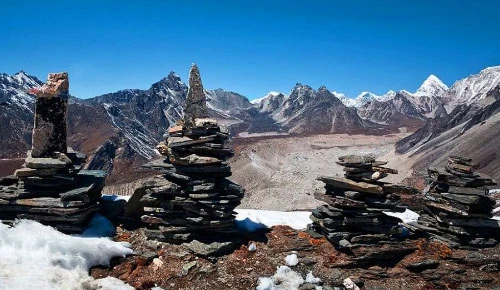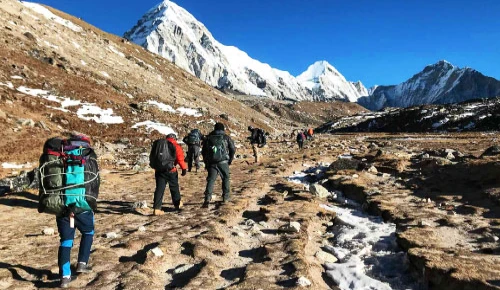Travel Guide to Tibet
Tibet is a beautiful place that people often visit, searching for an escape from the hustling and bustling of the crowded cities. Tibet offers a wide range of areas with breathtaking scenic beauty. It is unique in its culture, mesmerizing landscapes, and spiritual significance. However, with its high altitude and environment, Tibet has few travel restrictions. To learn about such restrictions, major attractions, and more.
Here is a complete travel guide to Tibet.
Table of Contents
Main Attractions
Discover Barkhor Street, the Potala Palace, and the Jokhang Temple in Lhasa.
Gyantse: Go to Kumbum Stupa and Pelkor Chode Monastery.
Shigatse: Visit the neighborhood market and the Tashilhunpo Monastery.
Mount Everest: Visiting Everest Base Camp is a must-do on any trip to Tibet.
Enjoy the breathtaking beauty of Namtso Lake, a holy lake.
Outlined Itinerary
Here is a typical 10-day itinerary for you as a sample:
Day 1–2: Get to Lhasa, unwind, and adjust to the altitude.
Day 3: Tour Lhasa, taking in the Jokhang Temple and Potala Palace.
Day 4: Tour Norbulingka Palace and Sera Monastery.
Day 5: Travel to Gyantse, stopping along the way at Yamdrok Lake.
Day 6: Continue to Shigatse after exploring Gyantse.
Day 7: Travel back to Lhasa after seeing the Tashilhunpo Monastery in Shigatse and travel to Everest Base Camp (EBC) and
Day 8 and 9: Explore Everest Base Camp
Day 10: Return to Lhasa.
Based on your preferences, the amount of time you have, and any additional permissions needed for particular sites, modify your plan.
If you prefer other options for the tour, we offer various Tibet packages, like the Tibet Overland Tour, the Tibet Cultural Tour, and so on.
Best Time to Visit
The best time to visit Tibet is usually around April–May or September–October. The high season in Tibet runs from April to October, which allows you to enjoy the snow without too many restrictions. However, traveling to Tibet in mid-winter can be a hassle since most areas won’t be accessible due to snow. Summer, usually around July and August, is known as the peak season.
Entry Permits
A travel permit is required for international travelers to visit Tibet along with their Chinese visa. The entry permit can be organized through a registered travel agency. If you are an international tourist, it is mandatory for you to apply for a Tibet Travel Permit in order to book flights or take a train to Lhasa, check into hotels, and visit various landmarks. Even though you already have a Chinese visa, a Tibet Travel Permit is still required.
Currency and Accommodation:
The Chinese Yuan (CNY) is the official currency in Tibet. Travelers are advised to carry cash as ATMs might not be available in remote areas. Accommodations vary as per the budget of the travelers, from guesthouses to luxury hotels in Lhasa and other major towns. If you are traveling during peak seasons, it is recommended that you book in advance.
Transportation:
Typically, travelers enter Tibet via the Qinghai-Tibet Railway or flights to Lhasa. You can navigate Tibet via taxis, buses, and local transportation. In certain distant locations, it may be advantageous to hire a local driver or guide.
Travel Insurance
Travel insurance is a must for your Tibet tour. It's like a safety net for your journey. This special insurance covers unexpected events, like medical emergencies or trip cancellations, which can happen to anyone. If you get sick or have an accident, it ensures you'll get the right care. Plus, it takes care of any changes or disruptions in your travel plans. So, don't forget to get travel insurance before heading to Tibet. It's a smart choice to make your trip worry-free.
Important Tips
Ensure you have the required permits for Tibet before traveling.
Spend a few days in Lhasa to acclimatize to the high altitude.
Show respect for Tibetan culture and customs, especially when visiting monasteries and temples.
Wear modest and layered clothing, as well as a hat and sunscreen for sun protection.
Drink plenty of water to combat the effects of high altitude.
It's often required to travel with a licensed tour guide or in a group in Tibet.
Ask for permission before taking photos of people or religious sites.
Credit cards aren't widely accepted; bring enough cash for your trip.
Book lodging in approved areas to comply with regulations.
Expect limited internet and phone access in remote areas.
Bring essential medications, warm clothing, and basic supplies.
Respect the fragile Tibetan ecosystem and avoid littering.
Keep updated on the political and travel situation in Tibet before and during your trip.
Knowing a few words can enhance your experience.
Embrace the breathtaking landscapes, unique culture, and spiritual experiences Tibet offers.
Conclusion
Despite all that, it is crucial for all tourists to respect the locals, their customs, and the environment. You may visit Tibet whenever you choose, at any age, and throughout any season. Just make sure you are in good enough physical condition to travel at such a high altitude. Since trains and flights now link to Tibet, getting there is no longer a challenge. In addition, five motorways connect Chengdu, Xining, Lijiang, Yecheng, and Kathmandu to Lhasa. Enjoy your journey, and find peace and comfort in the mesmerizing beauty of Tibet.








